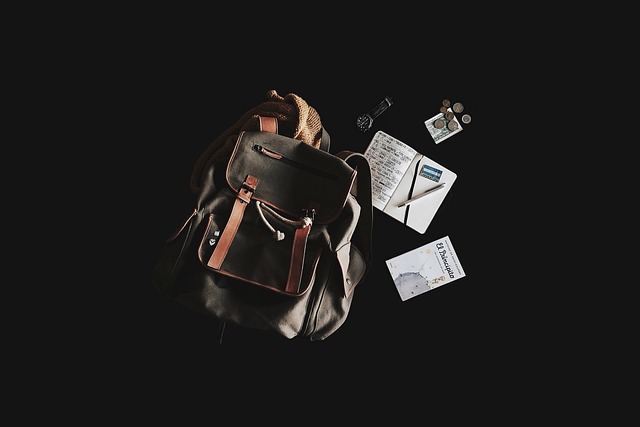Table of Contents
ToggleHow do I clean a backpack without damaging it?
Have you ever wondered how to keep your backpack looking fresh and new?
Cleaning your backpack is essential for maintaining its appearance and prolonging its lifespan.
However, using the wrong techniques or harsh chemicals can lead to damage, such as fading, warping, or weakening the fabric. Whether it’s a stylish everyday bag or a rugged hiking backpack, proper care is vital.
This guide will provide you with effective cleaning methods tailored to different materials, ensuring your backpack stays in great condition while removing dirt, stains, and odors.
Let’s dive into the best practices for backpack cleaning!
Here how to clean lululemon camera bag?
Is it worth to wash camera backpack?
How do I clean a backpack without damaging it?
Washing your camera backpack can be worthwhile to maintain its appearance and functionality, especially if it has accumulated dirt, dust, or spills.
However, it’s essential to consider a few factors before washing:
- Material: Check the care label for washing instructions. Some materials may require spot cleaning rather than a full wash.
- Protection: Ensure all camera gear is removed before washing. Moisture can damage equipment, so ensure the backpack is completely dry afterward.
- Wear and Tear: Frequent washing can lead to wear, particularly on seams and zippers. If your backpack is heavily soiled but structurally sound, a wash may prolong its lifespan.
- Maintenance: Regularly brushing off dirt or wiping it with a damp cloth can help maintain cleanliness without a full wash.
Overall, washing your camera backpack can be beneficial if done carefully and infrequently to protect both the backpack and your gear.
Can you wash backpack yourself?
How do I clean a backpack without damaging it?
Yes, you can wash your backpack yourself, but it requires some care to avoid damage. Here’s a step-by-step guide:
- Empty the Backpack: Remove all items, including any detachable parts like straps or organizers.
- Check Care Instructions: Look for the manufacturer’s care label for specific washing guidelines. Some backpacks may require spot cleaning instead.
- Spot Clean: Use a mild detergent mixed with water and a soft brush or cloth to clean areas with stains or heavy dirt.
- Machine Wash: If the care label allows, place the backpack in a mesh laundry bag and wash it on a gentle cycle with cold water. Avoid using fabric softeners.
- Air Dry: After washing, let the backpack air dry completely. Avoid direct sunlight or heat sources to prevent damage.
By following these steps, you can effectively clean your backpack without compromising its integrity.
Can you wash backpack in washing machine without damaging it?
Washing a backpack in a washing machine can be safe, but it largely depends on the material and construction of the backpack. Here are some guidelines to help prevent damage:

- Check the Care Label: Always read the manufacturer’s care instructions. Some backpacks are machine washable, while others are not.
- Remove Detachables: Take out any removable components, like straps, hip belts, or organizers, and empty all pockets.
- Use a Laundry Bag: Place the backpack in a mesh laundry bag to protect it from abrasion during the wash cycle.
- Select a Gentle Cycle: Use cold water and a gentle cycle to minimize stress on the fabric and seams.
- Avoid Harsh Chemicals: Use mild detergent and skip fabric softeners, as they can damage waterproof coatings.
- Air Dry: Always air dry your backpack instead of using a dryer to prevent shrinkage or deformation.
Following these steps can help you wash your backpack safely without causing damage.
Things to know before cleaning backpack without damaging it
How do I clean a backpack without damaging it? Before cleaning your backpack, consider the following important factors to avoid damage:
Here, how to make a camera bag from scratch?
- Material: Identify the fabric type—canvas, nylon, or leather—as each requires different cleaning methods. Check for waterproof coatings that may need special care.
- Care Instructions: Always refer to the manufacturer’s care label for specific cleaning guidelines. This will help you understand if machine washing is safe.
- Detachable Parts: Remove all detachable components like straps, hip belts, or organizers. Cleaning them separately can prolong their lifespan.
- Spot Cleaning: For minor stains, use a damp cloth and mild detergent for spot cleaning instead of a full wash.
- Drying Method: Avoid direct sunlight and heat sources when drying, as they can cause fading or damage. Air dry your backpack completely to prevent mildew.
- Test Cleaning Solutions: If using a new cleaning solution, test it on a small, inconspicuous area first to check for any adverse reactions.
By keeping these factors in mind, you can effectively clean your backpack without damaging it.
How do I clean a backpack without damaging it?
Cleaning a backpack without damaging it involves a careful approach. Follow these steps:
- Empty the Backpack: Remove all contents, including small items and removable parts, like straps or pouches.
- Check the Care Label: Refer to the manufacturer’s care instructions for specific cleaning guidelines based on the material.
- Spot Clean: For minor stains, mix mild detergent with water. Use a soft cloth or sponge to gently scrub the stained areas, avoiding harsh scrubbing that could damage the fabric.
- Hand Wash: If deeper cleaning is needed, fill a tub with cold water and mild detergent. Submerge the backpack and use a soft brush to clean it, paying attention to creases and seams.
- Rinse Thoroughly: Rinse with clean water to remove soap residue.
- Air Dry: Hang the backpack upside down or place it in a well-ventilated area to air dry. Avoid direct sunlight and heat sources to prevent fading and damage.
By following these steps, you can clean your backpack safely and effectively.
7 Tips to clean a backpack without damaging it
How do I clean a backpack without damaging it?- Here take a look at tips
1. Check the Care Label
Before cleaning your backpack, always refer to the care label.
This label provides crucial information about the materials used and the manufacturer’s recommended cleaning methods. Different materials, such as nylon, canvas, or leather, may require distinct cleaning approaches.
For instance, some may be machine washable, while others may only be suitable for hand washing or spot cleaning. Following the care instructions helps prevent damage, ensuring the longevity of your backpack.
If the label is missing or unreadable, do a bit of research online or on the manufacturer’s website to find specific care instructions.
Taking this initial step can save you from accidental damage that might occur during cleaning, preserving the backpack’s functionality and appearance for years to come.
2. Remove All Contents
Before starting the cleaning process, it’s essential to remove all contents from your backpack.
This includes not just obvious items like books and clothes, but also smaller items that may be tucked away in pockets or compartments.
Check every pocket thoroughly to ensure nothing is left behind. Emptying your backpack prevents damage to these items, such as electronic devices or personal belongings, and allows you to clean every part of the backpack effectively.
Additionally, removing detachable components, such as straps or organizers, will allow you to clean those items separately and reduce the overall weight of the backpack during cleaning.
This step is crucial for ensuring that you can clean the entire backpack thoroughly without risking harm to your belongings or the backpack itself.
Here, how to make your own camera bag?
3. Spot Clean Stains
For minor stains, spot cleaning is an effective method that helps maintain your backpack’s appearance without needing a full wash. Begin by mixing a mild detergent with water to create a gentle cleaning solution.
Using a soft cloth or sponge, gently dab the stained area, being careful not to scrub too hard, as this could damage the fabric.

It’s best to test the cleaning solution on a small, inconspicuous area first to ensure it doesn’t cause discoloration.
For tougher stains, consider using a soft-bristle brush to work the solution into the fabric gently.
After cleaning, wipe the area with a damp cloth to remove any soap residue. Spot cleaning not only helps to keep your backpack looking fresh but also extends its life by preventing dirt from settling in.
4. Hand Wash with Mild Detergent
If your backpack needs a more thorough cleaning, hand washing is often the safest method.
Fill a basin or tub with cold water and add a small amount of mild detergent, ensuring it’s well-dissolved. Submerge the backpack, taking care to avoid immersing any electronic components or removable parts.
Use a soft cloth or sponge to gently scrub the fabric, focusing on areas with heavy dirt or stains.
Be cautious with zippers and seams, as these can be delicate. Rinse the backpack thoroughly with clean water to remove all soap residue, as leftover detergent can damage the material over time.
Hand washing is an excellent way to clean your backpack while minimizing the risk of damage compared to machine washing.
5. Rinse Thoroughly
After cleaning your backpack, rinsing thoroughly is essential to remove any soap residue that could cause damage or attract dirt.
Fill a clean basin or tub with fresh water and gently submerge the backpack again, or use a hose in a well-ventilated area. Ensure that all parts of the backpack, including pockets and seams, are rinsed.
Pay special attention to areas where detergent may linger, as residue can lead to discoloration or fabric breakdown over time.
If you used a brush during cleaning, check that it hasn’t left behind any bristles or debris.
Rinsing well not only helps preserve the fabric’s integrity but also ensures that your backpack remains fresh and free from unwanted chemicals.
6. Air Dry Properly
Proper drying is crucial for maintaining the integrity of your backpack.
After rinsing, never use a dryer, as the heat can warp or damage the fabric and any plastic components. Instead, gently shake off excess water and place the backpack in a well-ventilated area to air dry.
Hanging the backpack upside down can help any remaining water drain out and prevent mildew from forming.
Avoid direct sunlight, as it can cause fading and weaken the material over time. If possible, lay the backpack flat on a clean, dry surface to ensure it dries evenly.
This method helps preserve the color, shape, and overall condition of your backpack, allowing it to remain functional and visually appealing for years.
7. Reassemble and Maintain Regularly
Once your backpack is completely dry, reassemble any detachable parts, ensuring everything is in good working order.
Inspect the zippers, buckles, and straps for any signs of wear and tear. Regular maintenance is vital for extending the life of your backpack; consider implementing a cleaning routine every few months, depending on usage.
For instance, a quick spot clean after outdoor adventures or a full wash every season can keep your backpack looking fresh and functional.
Additionally, storing your backpack in a cool, dry place when not in use will help prevent mold and mildew.
By taking these proactive steps, you can ensure your backpack remains in excellent condition, ready for your next adventure.
7 Steps to clean a backpack without damaging it
How do I clean a backpack without damaging it?- Here take a look at 7 steps
1. Gather Cleaning Supplies
Before starting the cleaning process, gather all necessary cleaning supplies to ensure you have everything you need at hand.
Here, how to make padded camera bag?
Essential items include a mild detergent, a soft brush or cloth, a sponge, and a bucket or basin filled with cold water.
If your backpack has specific care instructions, follow those recommendations for the best detergent type.
Additionally, you may want to use a mesh laundry bag if machine washing is permitted, and a towel for drying.
Gathering all supplies upfront streamlines the process, allowing you to focus on cleaning without interruption.
Having a dedicated space, like a well-ventilated area or outdoor space, can also make the task easier.
By preparing in advance, you set yourself up for a successful cleaning session without the risk of damaging your backpack during the process.
2. Empty the Backpack Completely
Before cleaning your backpack, it’s essential to empty it completely.
This includes removing all contents, such as books, clothing, electronics, and any small items that may be tucked away in pockets.
Check every compartment and pocket thoroughly to ensure nothing is left behind.
This step not only protects your belongings from damage during cleaning but also allows you to clean every part of the backpack effectively.
If your backpack has detachable components, like straps, hip belts, or organizers, remove these as well.
By doing this, you can clean them separately, ensuring a thorough clean without the risk of harming your belongings.
Additionally, it allows you to inspect the interior of the backpack for any hidden dirt or stains, ensuring a more effective cleaning process overall.
3. Check Care Instructions
Before proceeding with any cleaning method, check the care instructions provided by the manufacturer.
The care label is typically found inside the backpack and contains vital information about the material and cleaning methods that are safe to use.
Different fabrics, such as nylon, canvas, or leather, may have specific cleaning requirements. Some backpacks may be machine washable, while others may only be suitable for spot cleaning or hand washing.

If the care label is missing or unreadable, do some research online or visit the manufacturer’s website to find specific care guidelines.
By following these instructions, you can prevent accidental damage to your backpack and ensure it remains functional and visually appealing after cleaning. This step is crucial for preserving the integrity and longevity of your backpack.
4. Spot Clean Stains
If your backpack has specific stains or marks, spot cleaning is an effective way to tackle them without subjecting the entire bag to washing.
Begin by mixing a small amount of mild detergent with water to create a gentle cleaning solution.
Use a soft cloth or sponge to dab the stained areas, being careful not to scrub too hard, as this could damage the fabric.
It’s advisable to test the cleaning solution on a small, inconspicuous area first to ensure it won’t cause discoloration. For tougher stains, consider using a soft-bristle brush to work the solution into the fabric gently.
After treating the stains, use a clean, damp cloth to wipe away any soap residue.
Spot cleaning allows you to address specific problem areas while maintaining the overall condition of your backpack.
5. Hand Wash with Mild Detergent
If your backpack requires a more thorough cleaning, hand washing is often the safest method.
Begin by filling a basin or tub with cold water and adding a small amount of mild detergent. Ensure the detergent is well-dissolved before submerging the backpack.
Gently agitate the water to create suds and immerse the backpack, taking care to avoid immersing any electronic components or removable parts.
Here, does northface make a camera bag?
Use a soft cloth or sponge to scrub the fabric gently, paying particular attention to areas that are heavily soiled. Avoid using harsh scrubbing techniques that can damage the material.
After cleaning, rinse the backpack thoroughly with clean water to remove all soap residue, as leftover detergent can harm the fabric over time.
Hand washing is a safe and effective way to clean your backpack while minimizing the risk of damage.
6. Rinse Thoroughly
Thorough rinsing is a critical step after cleaning your backpack to ensure all detergent and soap residue is removed.
Any remaining soap can lead to fabric deterioration and attract dirt, resulting in a less clean backpack over time. To rinse, fill a clean basin or tub with fresh water or use a hose in a well-ventilated area.
Submerge the backpack gently in the fresh water and ensure all parts, including pockets and seams, are rinsed.
If you used a soft brush during cleaning, check to ensure that no bristles or debris have been left behind. Rinse the backpack multiple times if necessary to ensure that all soap is removed.
Taking the time to rinse thoroughly helps maintain the integrity of the fabric and ensures that your backpack remains fresh and clean without unwanted chemicals.
7. Air Dry Properly
After rinsing your backpack, the drying process is crucial to maintain its shape and condition.
Avoid using a dryer, as the heat can warp or damage both the fabric and any plastic components. Instead, gently shake off excess water and place the backpack in a well-ventilated area to air dry. Hanging the backpack upside down can help drain any remaining water and prevent mildew from forming.
Ensure that the drying area is free from direct sunlight, as UV rays can cause fading and weaken the material over time. If possible, lay the backpack flat on a clean, dry surface to ensure it dries evenly.
Allow ample time for the backpack to dry completely before reassembling any detachable parts.
Proper air drying helps preserve the color, shape, and overall condition of your backpack, ensuring it remains ready for future adventures.
5 Methods to clean a backpack without damaging it
How do I clean a backpack without damaging it?- Here take a look at 5 methods.
1. Spot Cleaning
Spot cleaning is an effective method for tackling specific stains or dirt on your backpack without needing a full wash.
Begin by identifying the areas that need attention, such as scuffs, food stains, or grime. Prepare a cleaning solution by mixing a small amount of mild detergent with water.
Use a soft cloth or sponge to apply the solution to the stained areas, gently dabbing rather than scrubbing to avoid damaging the fabric. For stubborn stains, a soft-bristle brush can be used for gentle scrubbing.
It’s a good idea to test the cleaning solution on a small, inconspicuous area first to ensure it doesn’t cause discoloration.
After treating the stain, use a clean damp cloth to wipe away any soap residue.
Spot cleaning allows you to keep your backpack looking fresh without the risks associated with a complete wash, making it a convenient and quick solution.
2. Hand Washing
Hand washing is a safe and thorough method for cleaning your backpack, especially if it’s heavily soiled or has been exposed to outdoor elements.
Start by filling a basin or tub with cold water and adding a small amount of mild detergent.
Submerge the backpack in the soapy water, ensuring it’s fully immersed. Use a soft cloth or sponge to gently scrub the fabric, focusing on areas with stains or dirt.
Avoid using harsh scrubbing techniques, which can damage the material. Be careful around zippers, buckles, and seams to prevent any wear. After cleaning, rinse the backpack thoroughly in fresh water to remove all soap residue.
This step is crucial, as leftover detergent can lead to fabric deterioration over time. Hand washing ensures a deep clean while minimizing the risk of damage, helping maintain your backpack’s integrity and appearance.
3. Machine Washing
Machine washing can be an option for cleaning certain backpacks, but it’s essential to approach this method cautiously. First, check the care label to ensure that your backpack is machine washable.
If permitted, empty all contents and detach any removable components, such as straps or hip belts.
Here, does tumi make a camera bag?
To protect the backpack during the wash, place it in a mesh laundry bag. Set your washing machine to a gentle cycle with cold water and add a mild detergent. Avoid using fabric softeners, as they can damage waterproof coatings.
After the wash cycle is complete, remove the backpack from the laundry bag and check for any remaining soap residue.
Rinse thoroughly if necessary. Finally, air dry the backpack in a well-ventilated area, avoiding direct sunlight and heat sources.
Machine washing can be convenient for cleaning sturdy backpacks, but ensure you follow these precautions to prevent damage.
4. Dry Cleaning
Dry cleaning is an effective method for cleaning backpacks made from delicate or sensitive materials, such as leather or specific synthetic fabrics.
If the care label indicates that dry cleaning is recommended, take your backpack to a professional dry cleaner who specializes in handling such items. They have the expertise and equipment to clean the material without causing damage.
When handing over your backpack, inform the cleaner about any specific stains or problem areas that need attention. Professional dry cleaning can remove dirt, stains, and odors while maintaining the integrity of the fabric.
It’s important to remember that dry cleaning may not be suitable for all types of backpacks, so always check the care label before proceeding.
While this method may involve additional costs, it can help preserve the quality and appearance of your backpack, especially for high-end or specialty items.
5. Using a Soft Brush
Using a soft brush is a gentle yet effective method for cleaning your backpack, particularly for removing dust, dirt, and debris from the surface and seams.
Begin by choosing a soft-bristle brush, such as a toothbrush or a dedicated cleaning brush, to prevent any fabric damage. Start brushing the exterior of the backpack, working in small sections to dislodge dirt and debris.
Pay extra attention to areas like pockets, zippers, and seams, where dust tends to accumulate. If you encounter any stubborn dirt, consider using a mild detergent mixed with water to dampen the brush slightly before cleaning.
After brushing, use a clean, dry cloth to wipe away any loosened dirt.
This method is particularly useful for quick touch-ups between deeper cleanings, helping to maintain the backpack’s appearance without the risks associated with more intensive cleaning methods.
Regular brushing can prolong the life of your backpack by preventing dirt buildup.
Related faq’s
Can I machine wash my backpack?
Whether you can machine wash your backpack depends on the material and care instructions. Always check the care label before washing.
If the label permits machine washing, empty all contents, remove detachable parts, and place the backpack in a mesh laundry bag. Use a gentle cycle with cold water and a mild detergent to minimize the risk of damage.
What is the best way to spot clean stains?
To spot clean stains, mix a small amount of mild detergent with water. Use a soft cloth or sponge to apply the solution to the stained area, gently dabbing rather than scrubbing.
For tougher stains, a soft-bristle brush can be used. Rinse with a damp cloth afterward to remove soap residue.
How often should I clean my backpack?
The frequency of cleaning depends on usage and exposure to dirt. If you use your backpack frequently for outdoor activities or travel, consider cleaning it every few months.
For everyday use, a quick spot clean when necessary and a deeper clean every season can help maintain its appearance.
How do I dry my backpack after cleaning?
After cleaning, air drying is the safest method. Avoid using a dryer, as heat can damage the fabric and components.
Shake off excess water and hang the backpack upside down in a well-ventilated area, avoiding direct sunlight, which can cause fading.
Can I use bleach to clean my backpack?
Using bleach on your backpack is generally not recommended, as it can damage the fabric and cause discoloration.
Instead, opt for a mild detergent or specialized cleaner suited for the material of your backpack. Always test any cleaning solution on a small, inconspicuous area first.
How can I prevent my backpack from getting dirty?
To prevent your backpack from getting dirty, consider using a rain cover when it’s wet outside and avoid placing it on dirty surfaces.
Regularly empty and clean the interior, and store it in a cool, dry place when not in use. Spot cleaning any stains immediately can also help maintain its appearance.
What should I do if my backpack has a bad odor?
If your backpack has a bad odor, clean it thoroughly using a mix of mild detergent and water.
For persistent odors, try adding baking soda to the interior and letting it sit overnight before vacuuming it out. Ensure the backpack is completely dry after cleaning to prevent mildew growth.
Conclusion
Cleaning your backpack without damaging it is essential for maintaining its appearance and longevity.
By following careful methods such as spot cleaning, hand washing, and checking care instructions, you can effectively remove dirt and stains while protecting the fabric.
Always empty your backpack completely, use mild detergents, and avoid harsh chemicals like bleach.
Proper drying techniques, such as air drying away from direct sunlight, are crucial to prevent damage.
By adopting regular cleaning practices and addressing stains promptly, you can keep your backpack looking fresh and ensure it remains a reliable companion for your adventures.







